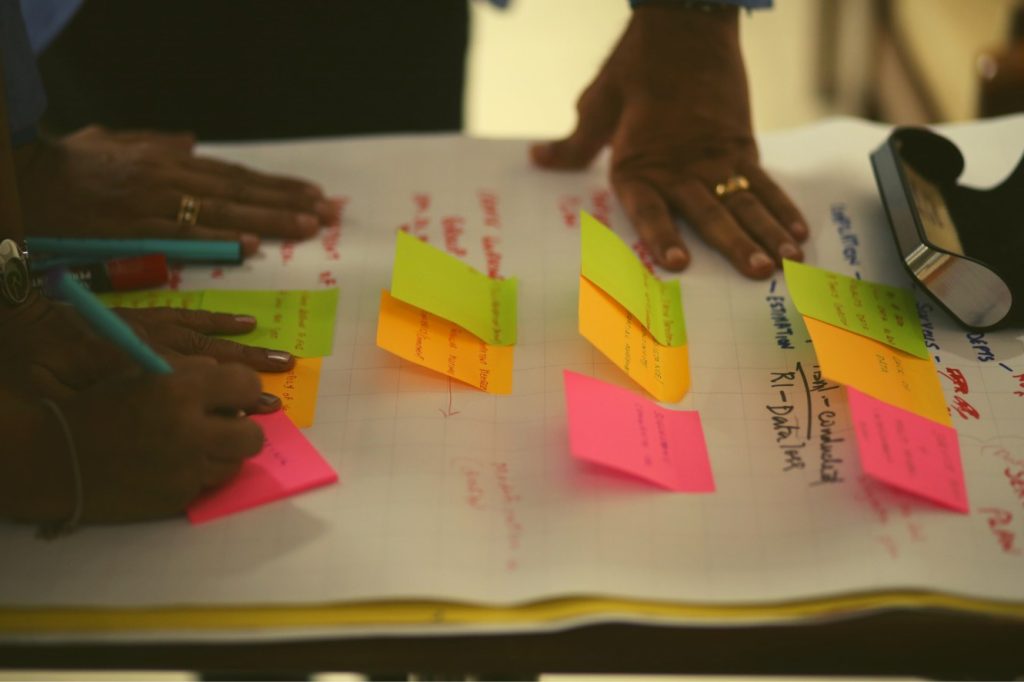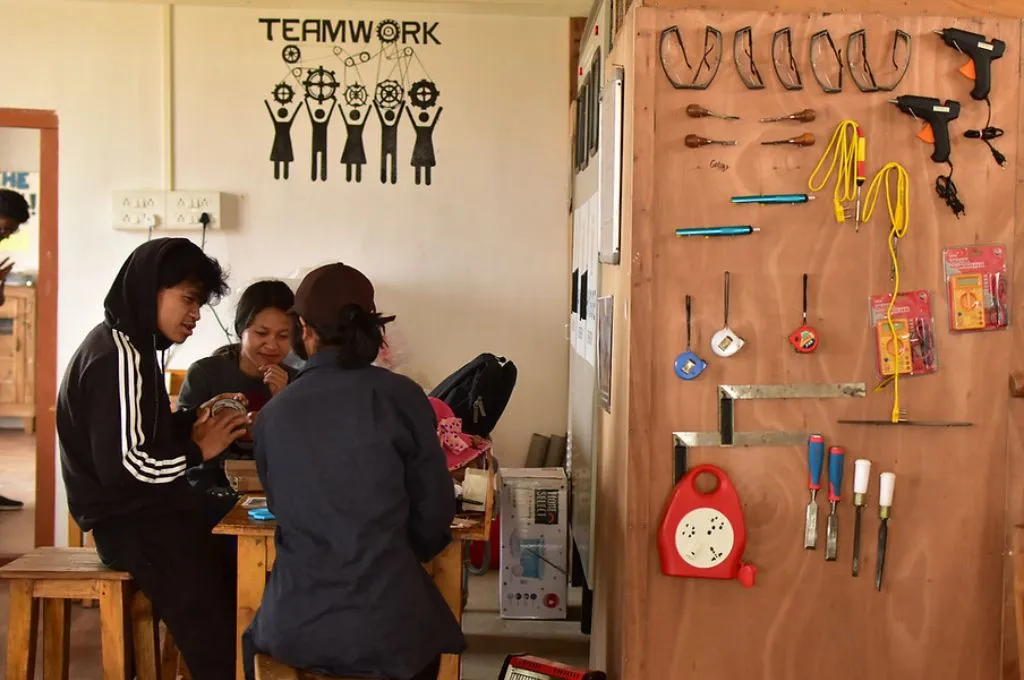Innovation is understood either as an improved result, that is, an improved product or process, or as the implementation of an already improved product or service in a different context. It often involves an interplay of multiple ideas or strategies with the goal of unlocking greater shared or individual value.
Innovation is crucial for any organisation, be it public or private.
In the wake of the COVID-19 pandemic, the need to continuously reinvent public service delivery has become even more critical. We must re-envision a higher risk appetite within government organisational structures and build capacity for innovation. And this dynamism in public services can be enabled by developing an innovation practice in public administration.
The toolkit to innovate draws heavily from the schools of systems thinking, participatory/co-design, and design thinking, among others. These form the essence of the innovation ecosystem, and are widely used by the private sector for both product as well as service design. However, innovation in the public sector faces numerous challenges. And so, to aid our process of reimagining the innovation practice in governments, we’ve examined various innovative public sector programmes and their evolution through these schools of thought, reframing certain common challenges to innovation in the public sector as ‘how might we’ design questions.

An antecedent to innovating a new product or process in the public sector is not to compromise on the delivery of the product or service as it exists. This is primarily because the public sector is often defined by the objective of creating ‘common good’—something that seeks to benefit many instead of a select few. However, given the broad scope of its mandates, public service delivery is almost always constrained. This is both a capacity issue in terms of lack of human resources as well as a capability issue in terms of adequate training and skills.
Take, for example, the midday meal scheme that was launched by the Government of India in 1995 to improve nutrition among schoolchildren for better learning outcomes. Over time the programme has evolved into an incentive to increase enrolment and attendance in schools. With the introduction of centralised kitchens in various states and the addition of children in the pre-primary section of government schools to the scheme, the programme has been repeatedly modified to achieve these outcomes across varying local contexts.
The point to note here is that these iterations in programme design happened in response to evolving demands from the programme itself. Could better innovation capabilities have enabled this iterative design proactively instead of reactively? Would they have also led to shorter, contextual, and more frequent iterations, leading to a quicker timeline to create the desired impact?
How might we develop innovation capabilities and embed them in public administration in favour of sustainable innovation life cycles?
Identifying required capabilities, curating, and delivering training programmes are some common methods used to build capacity. However, in order to sustain these innovation practices, it is also important to identify appropriate opportunities for trained officials to leverage these skills and measure their efficacy in the public sector. It may be more effective to organise several skill-building workshops with officials engaged in designing policies parallel to the programme or policy life cycle.
This leads us to our first ‘how might we’ design question: How might we develop innovation capabilities and embed them in public administration in favour of sustainable innovation life cycles?
One of the approaches to innovation adopted by the public sector globally is to borrow from smaller successful experiments in the private sector and implement these existing innovations in a different context. However, this is not an exercise in merely leveraging successful technologies from the private sector for public service. In order to be considered successful in the context of the public sector—where it’s essential to cater to the needs of many—these technologies must go through their own innovation life cycle. The innovation life cycle refers to the various stages of the innovation process in the public sector. It consists of identifying opportunities and risks in implementation, conducting pilots, and tweaking products or the implementation strategy. The caveat with pilots is that they are often implemented for a subset of the population and, in doing so, move away from the government’s mandate of ‘common good’. And in conflict with the public sector operating in a culture of zero errors, they may sometimes fail.
While having multiple checks and balances is necessary in the public sector, it often doesn’t leave space for experimentation.
Take the example of EdTech. As education shifted online during the pandemic, EdTech emerged as a crucial component to ensure schooling continued for children. The technology had existed even before the pandemic, and was being used by private schools, although in a limited capacity. But the mainstreaming of technology to deliver education had not been implemented on such a large scale before, where in the face of many challenges, governments across the country rapidly shifted to teaching and learning in the online mode.
Even though this was a pilot conducted in times of distress, it led to a better understanding of the real challenges around its adoption. This also helped identify the opportunity to use EdTech as an intervention in other low-enrolment situations, such as in the case of lack of accessibility to schools due to distance or temporary displacement due to a disaster.
While having multiple checks and balances is necessary in the public sector, it often doesn’t leave space for experimentation. The approach to the adoption of EdTech at such a large scale in this case wasn’t intentional, and the apprehensions around systems capacity, its inclusivity and effectiveness, and so on did not suddenly go away because of the emergence of a universal need. However, the pandemic left almost no option for the public sector but to take this leap, take a risk, and innovate to ensure schooling could continue.
This leads us to our second ‘How might we’ design question: How might we create space for experimentation and learning in public administration in favour of long-term effectiveness and efficiency?
An innovation practice in the public sector must include an innovation toolkit customised for the sector.
Another important factor to keep in mind is that the long-term objective of creating ‘common good’ is integral to the public sector. One such goal, for instance, is improving the quality of life for all citizens, which encompasses several outcomes across health, environment, economic well-being, and so on. The government delivers these outcomes through public infrastructure, provision of public services, social protection programmes, awareness generation, and so on. However, teams that deliver public services often work in specialised sectors and functions. This can hinder transparency and reduce opportunities to collaborate and experiment with new ideas.
For example, if we look at access to school education, scholarships are offered based on merit and socio-economic constraints in order to reduce the drop-out rate in secondary education. The Department of School Education and Literacy, under the Ministry of Education, is a nodal department looking at reducing drop-outs. However, the ministries of Minority Affairs, Tribal Affairs, and Social Justice and Empowerment also offer scholarships for the communities they work with. In the existing organisational structure, while each of these ministries is headed by separate ministers and secretaries, they are all trying to address the common goal of reducing drop-outs. In a collaborative setting, the design and operations of these seemingly separate ministries could draw on each other’s strengths, in order to gain data-driven insights into the long-term efficacy and impact of scholarships as a way to reduce the drop-out rates collectively.
This leads us to our third ‘How might we’ design question: How might we reimagine organisational structures in public administration in favour of collaboration as a means to innovation?
These design questions are an initial nudge towards identifying opportunities to strengthen innovation as a practice in the public sector. In summary, an innovation practice in the public sector must include an innovation toolkit customised for the sector; processes to build capabilities within the sector to utilise said toolkit while designing programmes; space to create and support innovation processes and financing and policy for experimentation and innovation; and, most importantly, a dynamic organisational structure that itself would adapt to the emergence of innovation practice.
—
Know more
- Read this article to understand how collaboration can help unlock innovation.
- Read this research report for practical insights into public policy and the innovation ecosystem, and their intersection.
- Read this list of dos and don’ts of public sector innovation.





